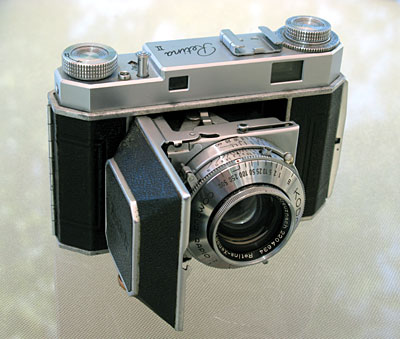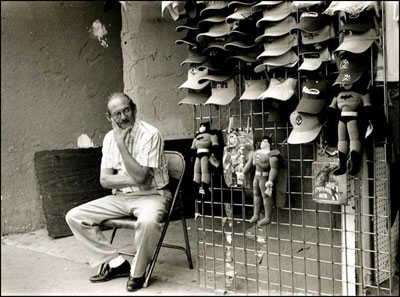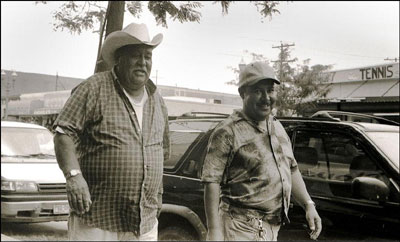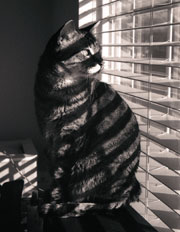vintage cameras index home

Pictures from the Retina II




The Retina II Manual is at the Butkus site.
My Retina II is a post-war model with a 50mm f2 coated Schneider-Kreuznach Retina-Xenon lens. Speeds on the Compur-Rapid shutter range from 1-1/500 second; it is very smooth in operation and nearly noiseless. The size of the camera is only fractionally larger than the contemporary pocket cameras like the Vito II and the Ikonta 35, but this Retina has a coupled rangefinder which corrects for parallax.
In operation, the Retina II is a little slow to use because it had a knob film advance and manually cocked shutter, unlike later models which featured lever winders with automatic shutter cocking. The swing-to-the-side door on the Retina II, as with all the retina folders, interferes slightly with the right hand grip and makes single handed operation nearly impossible. With the lens aperture scale inscribed on the bottom half of the lens, the camera needs to be tilted back 90 degrees to see and set the f stops. None of these features turns out to be very significant once one becomes fully accustomed to using the camera, and any shortcomings really pale in comparison to the outstanding images which are produced by this precision instrument.
I was at first disappointed in the performance of my Retina II because it had an intermittent severe light leak. The camera back made a little popping noise when pushed on; assuming that was implicated in the leak, I packed light seal strips all around the perimeter of the back. That got rid of the slight movement and pop in the back, but not the leak. The only possibility that seemed to be left was a problem with the bellows. In fact, when I extended the lens and looked very carefully, I found that one side of the bellows was completely detached from the inside of the film compartment. I daubed on some Pliobond glue and closed up the camera to let the joint dry overnight. The light leak was gone after that. However, my inexpert repair skills left a slightly bumpy seam at the base of the bellows which can be seen along the left border of my images when I print the full frame including a small portion of the surrounding film -- I kind of like it.
Most of the shooting I have done so far with the Retina II has been on city streets. Knowing I was working with a reliable, quality camera having a lens of extraordinarily high resolution gave me a lot of pleasure and self confidence in the shooting experience, whether I was taking quick hip shots or making more carefully composed compositions of architectural detail. The Retina II is not as thoroughly documented on the the Internet as are later models, but it can be acquired for less than what you will pay for the later IIa and IIc models and the image quality is every bit as good.

|
vintage cameras index home
 © mike connealy
© mike connealy